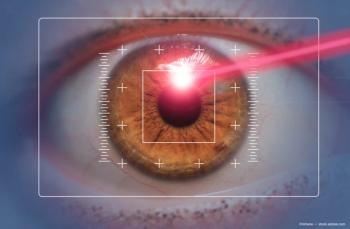
Decentered and subluxed IOLs need not be intimidating
Reposition the IOL first before performing a YAG capsulotomy in instances of symptomatic IOL decentration with concomitant PCO.
When faced with a symptomatic patient with concomitant IOL decentration and posterior capsule opacification (PCO), it can be difficult to determine which pathology is responsible for the patient's visual symptoms. It is of utmost importance not to treat the posterior capsule with YAG laser if doubt exists as to which factor is creating symptoms, since an open posterior capsule makes future lens repositioning extremely hazardous. When in doubt, first reposition the IOL and then perform the YAG treatment.
Recentration can be accomplished quite easily by using a combination of viscodissection and blunt dissection with the viscoelastic cannula through two or three paracenteses.1 The first paracentesis is placed in a location that allows for easy access to the anterior capsule where it overlies a large portion of the IOL. Only a small amount of viscoelastic is placed in the anterior chamber to allow room for the capsular bag to be inflated. The cannula is then slipped between the anterior capsule and the lens optic, and chondroitin sulfate and sodium hyaluronate (Viscoat, Alcon Laboratories) is injected to dissect the capsule from the lens and the posterior capsule. Additional paracenteses are placed to gain access to 360° of the capsular fornices.
When performing any IOL repositioning procedure, it is important to turn the microscope light down to the lowest illumination and angle the scope away from the macula. Keep in mind that if the initial IOL calculations were correct, light from the scope will be focused precisely on the retina, and macular burns can occur in a relatively short time if proper precautions are not taken. When IOLs are sutured to the iris or sclera, a corneal shield is effective in reducing light toxicity during maneuvers that do not require anterior chamber visualization.
Newsletter
Don’t miss out—get Ophthalmology Times updates on the latest clinical advancements and expert interviews, straight to your inbox.
















































.png)


